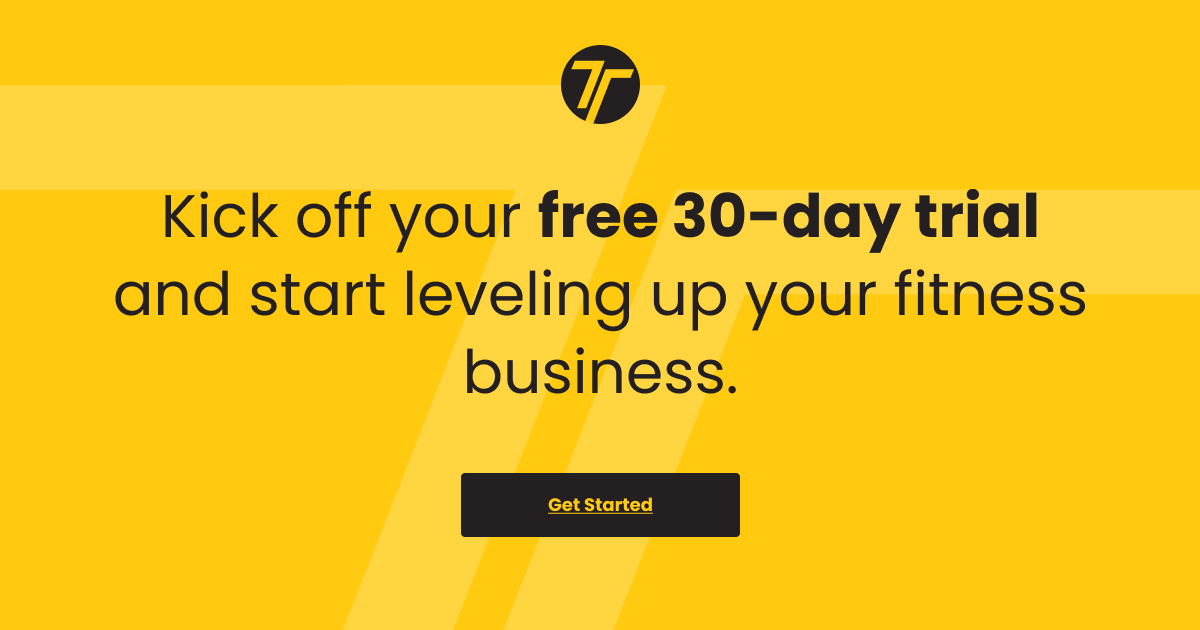
You can help clients reach their nutrition goals one-on-one. That’s meaningful work. But when you build a business around that expertise, when you create something that isn’t limited by your physical presence or the hours in your day, everything changes. Real impact multiplies, and that’s when your professional and financial freedom truly begins.
Whether you’re offering personalized meal plans online, remote diet coaching, or full-scale nutrition and fitness coaching, there’s never been a better time to take your services digital.
In 2025, the demand for custom nutrition plans online, virtual nutrition coaching, and even sports nutrition coaching continues to grow, especially among busy professionals, athletes, and health-focused families who want results without the commute.
If you’re still running your business offline or using one too many tools, now’s the time to build a scalable, streamlined system built around your strengths!
👉 Check Out: How to Become a Nutrition Coach in 5 Simple Steps
Step #1: Establish a Professional Virtual Presence
The online fitness market is projected to hit $33.4 billion in 2025, growing at a rapid 33.1% CAGR, outpacing traditional gyms and in-person coaching.
That growth is 50% convenience, 50% expectation. Fitness consumers now expect a digital layer for everything.
Going virtual breaks two of the biggest constraints in coaching: time and geography. You’re no longer limited to your zip code or your calendar. Whether you’re offering online macro coaching or remote weight loss coaching, you don’t need to keep repeating your offer, process, or pricing in every DM. Instead, you build once, then share at scale.
Here are some must-haves for a professional virtual presence:
- A “How to Get Started” link in your bio
- A short intro video pinned on your Instagram
- A simple form or onboarding flow to filter leads before they book
- A coaching platform with your plans, coaching, and messaging, all in one place.
👉 Free Resource: The Foolproof Guide to Adding Nutrition Coaching to Your Services
Step #2: Leverage the Right Technology Platforms
Running a business is hard, especially when you’re a nutrition coach selling your expertise, your brain, and your time. We all have the same 24 hours to pour into client check-ins, admin, commutes, posting on IG, and taking care of our own health.
But as many people say, starting a business has never been easier than it is today. And that’s thanks to tech. It comes with a learning curve, and it does require some upfront investment, but over time, as you level up, it helps you serve clients faster, better, and yes, for more money.
In this context, coaching software are the ultimate solution for independent service providers, because, well, they offer everything in one place, saving time in managing multiple tools. ABC Trainerize is one of the best options for fitness and health coaches online who want to keep things simple.
With one app, you can deliver personalized meal plans online, track habits, collect progress photos, and manage payments, all without switching platforms:
- Auto-generated meal plans based on macros, calories, schedule, and preferences
- Clients can log or create their recipes
- Integrates with tools like MyFitnessPal, Apple Health, Garmin, and more
- Tracks habits, progress photos, and body metrics
- Built-in payments and an optional branded app
The tech you choose directly affects how smoothly you operate, how professional you come across, and how well clients stick to your plans. When your systems run cleanly, your time goes toward actual coaching, not chasing invoices or hunting down check-in notes across five platforms.
Step #3: Adapt and Digitize Your Coaching Materials
If you’re using the same protocol, the same ingredients, the same checklists or welcome guides, and answering the same questions over and over, you’re wasting time. You already know most of it by heart.
So cut down the friction. Start turning your frameworks and your accumulated experience into assets that live inside your coaching platform. That way, your process runs on rails and your time goes toward real nutrition coaching.
#1: Build a Core Library of Repeatable Plans
Use Smart Meal Planner to create base templates for common client goals (fat loss, performance, plant-based, etc.). These can support 1:1 clients, group programs, or serve as the foundation for online coaching for healthy eating.
#2: Centralize Your Teaching Materials
Upload onboarding kits, nutrition guides, and how-to resources directly into your platform. That way, clients always have access to what they need, without relying on scattered links or forgotten emails.
#3: Use Video Marketing to Reinforce Behavior Change
Short walkthroughs (like how to use a food log or prep protein ahead) help clients apply what they’ve learned. These can also be repurposed into a content bank or course later on.
#4: Set Up Consistent Coaching Touchpoints
Automated check-in prompts, habit tracking, and feedback forms help standardize how you support clients, especially when working across different time zones or scaling up your roster.
Step #4: Streamline Scheduling and Client Management
With the wrong scheduling and no streamlined process for client management, even if you only have 2 clients, it will perpetually feel like you’re fully booked. Add another client, and everything will break down.
So, if you want to grow a sustainable coaching business, keep loving what you do, and at the same time, deliver the best experience to your clients, you need structure.
- Let Clients Book and Reschedule on Their Own
Use something simple like Calendly or the built-in calendar inside ABC Trainerize. What can help here is setting clear windows for check-ins or calls. Clients get to pick from your available slots, and it syncs automatically.
- Keep Everything in One Place
Progress photos, weigh-ins, check-ins, habits. If it’s not trackable in the same system, you’ll drop the ball. Organize and label everything, and do regular maintenance cleanups on every file, tool, and app you use.
- Set Rules and Boundaries (neither you nor your clients can break)
Decide where communication happens (in-app, email, etc.) and when. A pinned message like “Weekly check-ins are due by Sunday, please use the form” saves you from repeating yourself or chasing replies in DMs.
- Automate What Slows You Down (or outsource things you dislike doing)
Check in reminders, revisit links, instructions, etc. Any info you find yourself sending more than twice? Turn it into a scheduled message or a saved template inside your app.
Step #5: Secure and Simplify Payment Processes
Manually sending invoices, chasing payments, or double-checking Stripe every week are all things of the past. Getting paid should be automatic.
Simple for them, invisible for you. Clients pay more consistently when it’s easy. You earn more consistently when it’s systemized.
- Use integrated payments: Whether via Stripe, PayPal, or Trainerize Integrated Payments, automate your billing.
- Offer flexible packages: Consider subscriptions, pay-per-plan, or hybrid models.
- Be clear on deliverables: Outline what’s included in your custom nutrition plans online to avoid scope creep.
Step #6: Develop a Robust Online Marketing Strategy
A strong online presence, your Instagram, email list, and landing pages, is how people find you, trust you, and buy from you. It works while you sleep. Add a simple, straight-shot funnel to that, and now you’ve got a system that brings in leads and turns them into paying clients consistently.
You control your income, your systems, your client flow, and your freedom.
Now, there’s always a tendency to overcomplicate what a “marketing strategy” is, or get stuck into vague and perpetual brand building. So what does a real online marketing strategy look like?
#1: Pick a primary platform: Your decision on your main channel should be based on where your audience hangs out.
#2: Share value-forward content: Post tips, client wins, and behind-the-scenes of your process.
#3: Choose a funnel and stick to it: Tell people how to work with you, download your freebie, or book a call.
And yes, marketing is easier when your systems are in place. Here’s our guide to starting an online fitness business; it applies just as well to nutrition.
Step #7: Implement an Effective Client Onboarding Process
Onboarding is where most coaches lose time, energy, and momentum, either by overcomplicating it (building the “Disneyland version” that’s always being updated) or by doing everything manually using five different tools just to get one client started.
You don’t need either. You need a simple, repeatable system that does two things:
#1: Gives your client a clear starting point
#2: Gives you the info you need to coach them properly, without the back-and-forth
Here’s what to include:
- A quick form to collect goals, habits, food preferences, and lifestyle info
- A simple welcome message or video explaining what to expect
- First action steps, like logging meals, setting habits, or reviewing their custom nutrition plan online
Final Thoughts
Going virtual doesn’t mean losing the human touch. If anything, online nutrition coaching gives you the chance to build deeper, more consistent relationships with clients, without being bound by location.
With the right tools and strategy, you can deliver results, scale your business, and become the go-to digital nutrition coach your audience trusts.
Next Steps:
- Learn how hybrid personal training can support your coaching model
- Explore ABC Trainerize Features for nutrition, fitness, and habit coaching – all-in-one!

